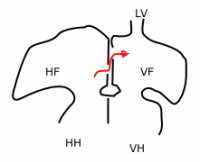Accidents & Violence, Author Interviews, Dermatology / 06.02.2019
Skin Care Products Make Cotton Fabrics More Flammable
MedicalResearch.com Interview with:
Dr Sarah Hall PhD
Senior Lecturer in Forensic Science
Anglia Ruskin University
MedicalResearch.com: What is the background for this study?
Response: We initially started the study in collaboration with Essex Fire and Rescue Services, as we were already doing some research on the recovery of evidence from fire scenes. During a visit to their cold fire scene facility, they described a tragic fatality with extensive fire damage, which didn’t link with the main fuel in the room. Therefore they questioned if a skin cream, regularly used by the victim, could have contributed as a fuel or ignited to initiate the fire and asked if we would do some initial research. Now we are also working with West Yorkshire and Cambridgeshire Fire and Rescue Service, the London Fire Brigade, St Andrews Centre for Plastic Surgery and Burns and the National Fire Chiefs Council.
We initially started the study in collaboration with Essex Fire and Rescue Services, as we were already doing some research on the recovery of evidence from fire scenes. During a visit to their cold fire scene facility, they described a tragic fatality with extensive fire damage, which didn’t link with the main fuel in the room. Therefore they questioned if a skin cream, regularly used by the victim, could have contributed as a fuel or ignited to initiate the fire and asked if we would do some initial research. Now we are also working with West Yorkshire and Cambridgeshire Fire and Rescue Service, the London Fire Brigade, St Andrews Centre for Plastic Surgery and Burns and the National Fire Chiefs Council.
(more…)
























 Sarah Hartz, MD PhD
Assistant Professor
Department of Psychiatry
Washington University School of Medicine in St. Louis
MedicalResearch.com: What is the background for this study? What are the main findings?
Response: This study is the first to show that daily drinking is dangerous. Specifically, drinking four or more times weekly, even if it’s only 1-2 drinks at a time, increases risk of mortality. This is in line with recent studies published in the Lancet, but we were able to break down their lowest drinking categories (up to 12.5 drinks weekly in one and up to 5.6 drinks weekly in the other) and found that the frequency is important, not just the average number of drinks per week. It looks like the increased mortality is predominantly due to cancer-related deaths.
Sarah Hartz, MD PhD
Assistant Professor
Department of Psychiatry
Washington University School of Medicine in St. Louis
MedicalResearch.com: What is the background for this study? What are the main findings?
Response: This study is the first to show that daily drinking is dangerous. Specifically, drinking four or more times weekly, even if it’s only 1-2 drinks at a time, increases risk of mortality. This is in line with recent studies published in the Lancet, but we were able to break down their lowest drinking categories (up to 12.5 drinks weekly in one and up to 5.6 drinks weekly in the other) and found that the frequency is important, not just the average number of drinks per week. It looks like the increased mortality is predominantly due to cancer-related deaths.






